For over 18 years (as I write this in 2017) I have written about NYC’s infrastructure, as well as other hidden aspects like ancient ads, signage, and things people rarely notice. While I have written extensively about lampposts, stoplights, and fire alarms, I failed to adequately note that there’s additional genres waiting to be plumbed. And it’s time I began talking about these bits of infrastructure that I’ve heretofore ignored.
That’s right, utility poles are finally going to get their due.
This variety of utility pole first appeared in NYC streets en masse in, I’d guess, the 1960s. They’re used to hold parking regulations signs and traffic control signs such as stop signals. They are inevitably painted green and have a multitude of holes that perfectly fit the screws and bolts used to attach the signs. These poles are never used to hold street signs….

… because street signs have their own individual steel cylindrical pole; some come with finials, some don’t. The brackets used to fasten street signs would not attach well to the “green hole” poles. Of course, street signs can go on lampposts, telephone poles and other poles we will see below using these brackets.
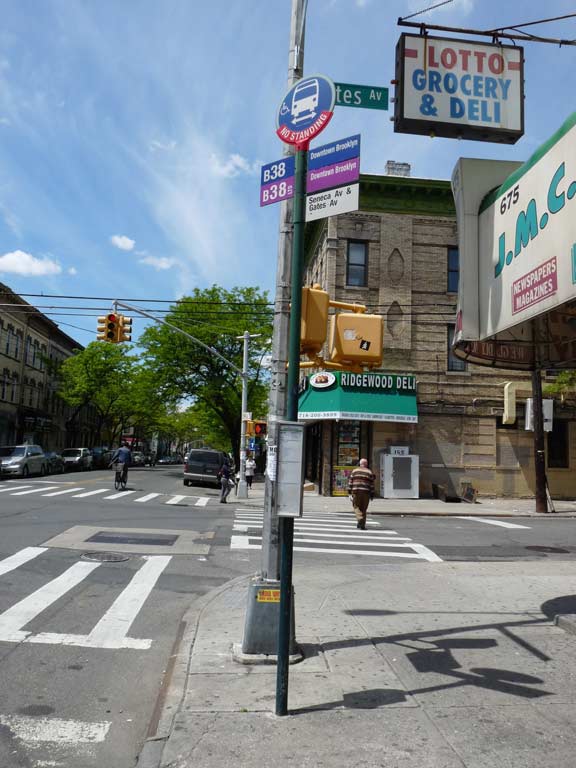
For about 20 years now, bus stops have had their own cylindrical pole, also panted green. These posts have a circular-shaped sign at the apex with a bus stop symbol and “no standing” warning. Squarish signs indicating the bus route number and cross streets are mounted near the top. At the middle of the pole is attached a 4-sided rectangular sign with routes and schedules (which should be taken with a grain of salt as a rule).
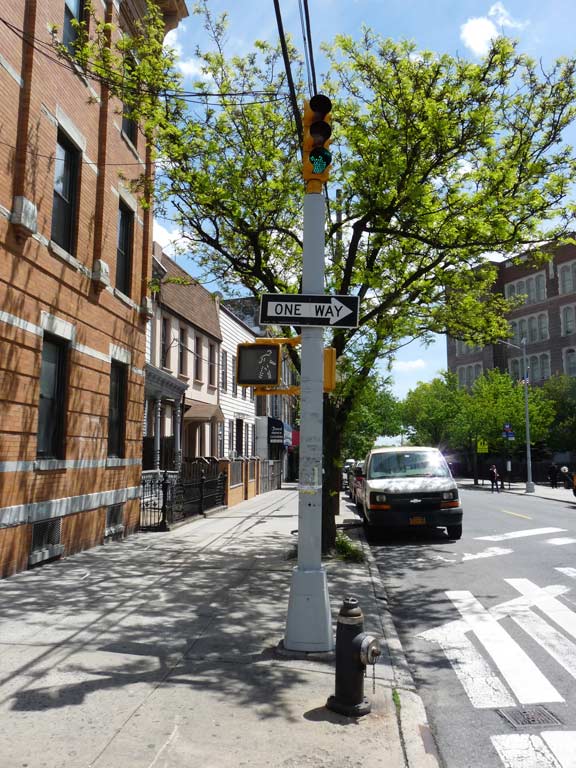
Donald Deskey poles with their L or J-shaped lamppost necks are still a common sight around town, but from the start, Deskeys have also been adaptable to hold stoplights, as seen here in Ridgewood. One-way signs and street signs can also be supported by them.
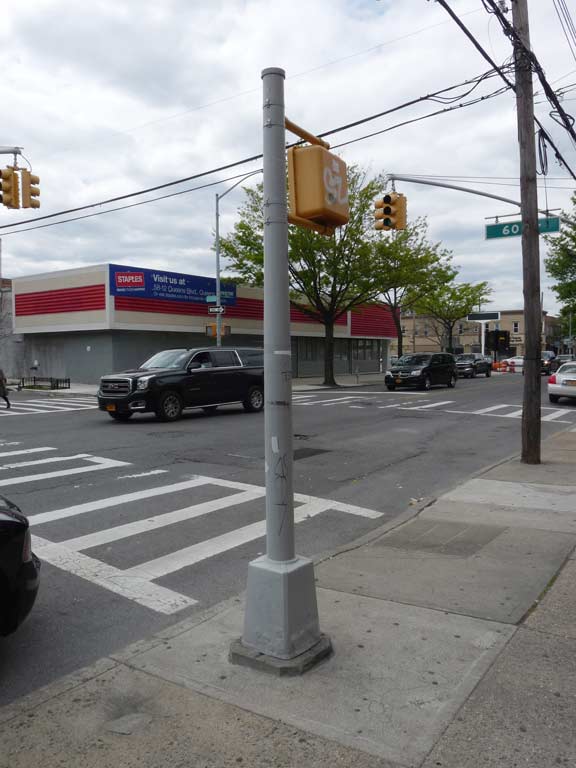
Beginning in the 1950s, these cylindrical posts began to supplant the grooved “olive” style stoplights that held two-color stoplights. They can support traffic signs, pedestrian control lights, regular tricolor stoplights and street ID signs. Until 1965, these poles had curved, fluted bases, but that year the bases have been box-shaped like this, though you can still see some “flutes” around town. Some have yellow finials, some don’t.
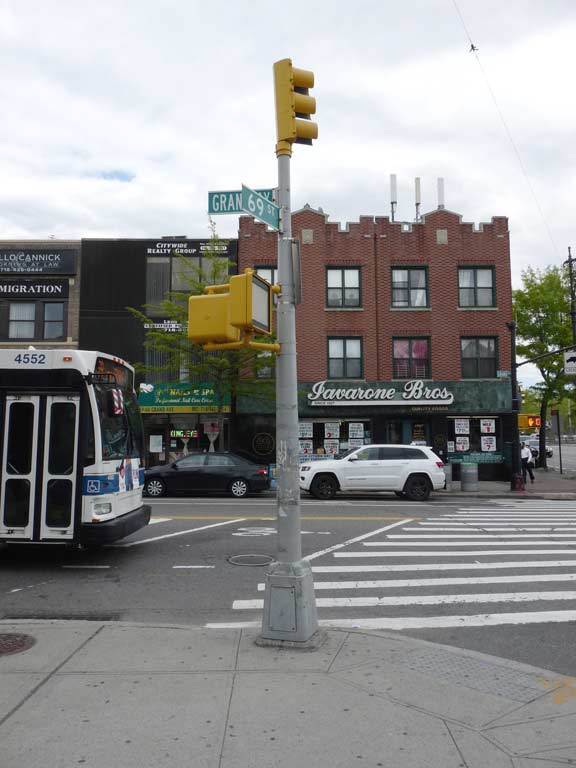
At intersections where the short cylinders are considered too short, these taller poles are used to support stoplights and traffic signals. They look like a hybrid between lampposts and stoplights. As you can see, they also frequently carry street ID signs.
No doubt, I’ve forgotten some varieties. Let me know in Comments.
If you want to get down to the specifics of NYC traffic signal posts, the Department of Transportation has a document for you.
5/12/17


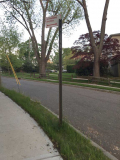
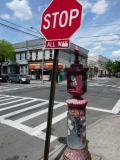
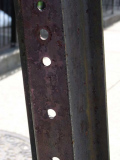
4 comments
kevin check this link out
http://www.nyc.gov/html/dot/downloads/pdf/nycdot-traffic-signal-standard-drawings.pdf
The tall pole in the bottom photo was introduced sometime in the 1980s as a replacement for the Deskey tall stoplight poles which were no longer being manufactured.
nice to see pictures of where I grew up in Ridgewood and Maspeth , Thanks
RECENTLY , ON THE RAMP FROM THE HARLEM RIVER DRIVE TO TH G.W.B., THERE ARE NEWER SHAFTS AND STREET LIGHTS ATTACHED TO OLDER RUSTING POLES. DOES ANYONE HAVE INFO ON THEM AND WHAT HOW THE OLD FIXTURES LOOKED?